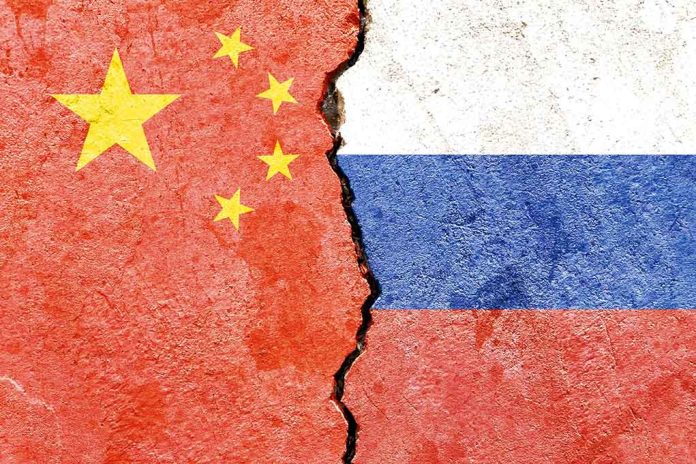
Russia and China launch massive joint military exercises, challenging U.S. global influence and raising concerns about their growing alliance.
At a Glance
- Russia and China are conducting their largest joint military exercises in 30 years, named “Ocean 24”
- The drills involve 90,000 troops, 400 warships, and 120 aircraft across multiple regions
- These exercises are seen as a countermeasure to U.S. military presence near Russian and Chinese borders
- The Biden administration has called on European allies to address the implications of this military partnership
- Analysts view the drills as an effort to deepen Sino-Russian military ties and challenge U.S.-led security coordination
Unprecedented Scale of Joint Military Exercises
In a show of military might, Russia and China have launched their largest joint military exercises in three decades. Dubbed “Ocean 24,” these extensive maneuvers involve an impressive force of over 90,000 troops, 400 warships and submarines, and 120 aircraft. The drills span vast areas from the Arctic Ocean to the Mediterranean Sea, showcasing the two nations’ combined military capabilities on an unprecedented scale.
The exercises, which will run until September 16, have invited at least 15 countries to observe. This massive display of military cooperation between Russia and China sends a clear message to the United States and its allies, particularly in light of rising geopolitical tensions.
Ocean 2024: All you need to know about Russia’s biggest naval exercises in 30 years
On September 10, multiple elements of the Russian Navy engaged in a strategic military exercise dubbed “Ocean 2024” that takes place in the Pacific and Arctic Oceans.
Over 400 warships,… pic.twitter.com/FYK9JNx386
— Sputnik (@SputnikInt) September 10, 2024
Strategic Implications and U.S. Response
Russian President Vladimir Putin has emphasized the importance of this military partnership as a countermeasure to the growing presence of U.S. forces near Russia and China’s borders. In a televised remark to Russian military officials, Putin stated, “Under the pretext of countering the allegedly existing Russian threat and containing the People’s Republic of China, the United States and its satellites are increasing their military presence near Russia’s western borders, in the Arctic, and in the Asia-Pacific region.”
“These are not dual-use capabilities,” U.S. Deputy Secretary of State Kurt Campbell told reporters, according to Politico EU, in reference to the latest material supplies China provided Russia. “These are basically being applied directly to the Russian war machine.”
The Biden administration has expressed concern over China’s support for Russia, particularly in the context of the ongoing conflict in Ukraine. The U.S. has accused China of providing substantial support to Russia, including non-dual-use military capabilities, which directly contributes to the Russian war effort.
Evolution of Sino-Russian Military Cooperation
The relationship between China and Russia has significantly strengthened since the Cold War era. Under the leadership of Xi Jinping and Vladimir Putin, this partnership has matured into what some analysts describe as a “de-facto military alliance.” Since their first joint military exercise in 2003, China and Russia have conducted over 30 such drills, demonstrating a growing level of cooperation and interoperability between their armed forces.
The annual “Joint Sea” naval exercises, initiated in 2012, have grown increasingly complex and expansive in scope. These drills have evolved from basic antisubmarine warfare to more sophisticated operations, including island seizures and live-fire air defense drills. However, it’s worth noting that despite their impressive scale, these exercises are still limited in scope, duration, and interoperability compared to U.S. and allied exercises.
Global Implications and Regional Concerns
The joint military exercises between Russia and China have far-reaching implications for global security dynamics. Japan, in particular, has expressed grave concerns about these activities. The Japanese defense ministry stated in its annual white paper, “These repeated joint activities are clearly intended for demonstration of force against Japan and are a grave concern from the perspective of the national security of Japan.”
China’s participation in these exercises also appears to be part of a broader strategy to divert attention from potential flashpoints like the Taiwan Strait. By engaging in military cooperation with Russia in areas like the Sea of Japan and the Sea of Okhotsk, China aims to complicate the strategic calculations of regional powers and the United States.
As these exercises unfold, the international community watches closely, recognizing that the strengthening Sino-Russian military alliance represents a significant shift in global power dynamics. The United States and its allies are now faced with the challenge of formulating an effective response to this growing partnership, which has the potential to reshape the geopolitical landscape for years to come.





